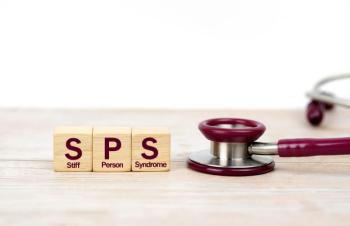
2023 Predictions: Three Ways Healthcare Innovation Will Evolve
It will be vital for providers of healthcare to consider whether innovations truly improve people’s lives and make care more efficient, or will they just be another layer on the workflow and take clinicians’ time away from patients.
The severe operational and technical challenges healthcare organizations faced this year will greatly influence the focus of innovation in 2023. With an influx of patients seeking both in-person and remote care, health systems endured staffing shortages, patient capacity issues, and data overload. In many cases, fragmented information systems that store data across different areas proved tedious for care providers.
The complex and time-consuming nature of having to make sense of data from multiple sources and systems continued to not only interfere with proactive, timely care delivery, but also valuable time spent with patients. With
In the upcoming year, the healthcare industry will see more emphasis on purpose-built innovation to ease clinical workflow, tools that provide actionable patient data for clinical decision-making, and improved care access through innovative business models.
Prediction 1: Focusing on purpose-built innovation to ease clinical workflow
In an era of increasing innovation, we must ensure that the tools we offer will improve the lives of patients and ease the workflow for clinicians, not to take additional time away from the patients, or create unnecessary steps or false alerts. Rather than piecing together data from fragmented systems, clinicians should be able to rely on connected technologies to access the right, actionable information at the right time. In 2023, innovation will likely focus on streamlining clinician workflows, including design improvement of patient monitoring and user-friendly technology interfaces, activating seamless data transfer between care settings, and developing artificial intelligence (AI) algorithms to support effective care transitions throughout the patient journey. Clinicians are responsible for the well-being of their patients, and the tools these clinicians use need to equip them with easily accessible, actionable data that evaluates their medical journey both in and out of the hospital.
Prediction 2: Recognizing the critical value of integrated clinical decision-making tools
In 2023, integrated clinical surveillance technology will continue to be essential for increasing efficiency by identifying patient trends, detecting early signs of deterioration, and enabling care providers to intervene by offering actionable guidance. Surveillance-level data continuously compiles and analyzes data from multiple sources and filters out the noise to provide more clinically relevant real-time insights into the state of a specific patient. As a result, clinicians can make more informed decisions about their patients’ care at bedside and whether an intervention is necessary in a particular moment by gaining a holistic, customized view of the patient's condition. Beyond advancing clinical decision support, reducing unnecessary alarms also helps clinicians allocate and maximize their time with the patients who need it most.
The key to this is the word "integrated," connecting the AI predictions to actional interventions, as the stand-alone clinical decision support or prediction tools provide little practical value. Healthcare organizations could benefit from finding a partner capable of taking data from hundreds of different medical devices and bringing it through one pipeline that can analyze, manage and disseminate it. Data managed and analyzed this way creates intelligence and clinical insights, so caregivers can use them to make the best care decisions for patients.
Prediction 3: Scalable business models to make quality care more accessible
Today’s digital transformation is driving healthcare organizations to identify new technologies and business models that prioritize patient outcomes while keeping IT costs in check. From New York City to rural Kansas, the standard of care should still be the same regardless of where patients live, with equal access to the most up-to-date technology. As technology advances and costs grow, software-as-a-service (SaaS) models will create a predictable and cost-friendly way to adopt, standardize and scale digital tools, while ensuring equitable access to care.
With SaaS, under-resourced health systems can shift away from monumental hardware capital or perpetual software purchases to smaller, more incremental upgrades based on needs. With a lower initial investment and the flexibility of a “pay-as-you-go,” subscription-based model, organizations can better predict costs while helping increase technology access to deliver quality care.
Paving the way to clinician and patient-centric innovation
In 2023, as the healthcare industry advances innovation, it will be vital for technology providers to consider this question: Will this innovation truly improve people’s lives and make care more efficient, or will it just be another layer on the workflow and take clinicians’ time away from patients?
We have watched healthcare systems become increasingly resilient during the COVID-19 pandemic. Now we have the opportunity to provide innovation that will improve the patient experience and relieve mounting clinician stress. The improved efficiencies that come with connected informatics solutions will help improve the provider experience and patient outcomes and maximize existing resources while minimizing costs.
Huiling Zhang, MD, MPH, MBA is Chief Medical Officer for Connected Care Business Cluster at Philips.
Newsletter
Get the latest industry news, event updates, and more from Managed healthcare Executive.


















































